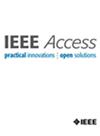Deep Learning-Based MRI Brain Tumor Segmentation With EfficientNet-Enhanced UNet
IF 3.4
3区 计算机科学
Q2 COMPUTER SCIENCE, INFORMATION SYSTEMS
引用次数: 0
Abstract
Medical image segmentation plays a critical role in the field of medical image processing. Precisely delineating brain tumor areas from multimodal MRI scans is crucial for clinical diagnosis and predicting patient outcomes. However, challenges arise from similar intensity patterns, varying tumor shapes, and indistinct boundaries, which complicate brain tumor segmentation. Traditional segmentation networks like UNet face difficulties in capturing comprehensive long-range dependencies within the feature space due to the limitations of CNN receptive fields. This limitation is particularly significant in tasks requiring detailed predictions such as brain tumor segmentation. Inspired by these constraints, this study suggests incorporating EfficientNet as an encoder within UNet, with a thorough reassessment of its fundamental components: the encoder, bottleneck, and skip connections. EfficientNet replaces UNet’s encoder, initially frozen to retain learned features from pre-trained weights, adept at extracting detailed features crucial for precise segmentation like brain tumors from MRI scans. Preserving UNet’s bottleneck compresses EfficientNet’s outputs, while skip connections maintain spatial integrity during decoder upsampling. The decoder reconstructs the original image size by merging encoder-decoder features, refining boundaries with convolutional layers for accurate clinical insights. The study conducted multiclass operations on the Brain-Tumor.npy dataset from Kaggle, consisting of 3064 T1-weighted contrast-enhanced images from 233 patients with meningioma (708 slices), glioma (1426 slices), and pituitary tumor (930 slices). Experimental findings in brain tumor segmentation tasks show that the proposed model achieves performance on par with or better than recent CNN or Transformer models. Specifically, the model achieves an accuracy of 0.9925 and a loss of 0.2991 on the dataset.求助全文
约1分钟内获得全文
求助全文
来源期刊

IEEE Access
COMPUTER SCIENCE, INFORMATION SYSTEMSENGIN-ENGINEERING, ELECTRICAL & ELECTRONIC
CiteScore
9.80
自引率
7.70%
发文量
6673
审稿时长
6 weeks
期刊介绍:
IEEE Access® is a multidisciplinary, open access (OA), applications-oriented, all-electronic archival journal that continuously presents the results of original research or development across all of IEEE''s fields of interest.
IEEE Access will publish articles that are of high interest to readers, original, technically correct, and clearly presented. Supported by author publication charges (APC), its hallmarks are a rapid peer review and publication process with open access to all readers. Unlike IEEE''s traditional Transactions or Journals, reviews are "binary", in that reviewers will either Accept or Reject an article in the form it is submitted in order to achieve rapid turnaround. Especially encouraged are submissions on:
Multidisciplinary topics, or applications-oriented articles and negative results that do not fit within the scope of IEEE''s traditional journals.
Practical articles discussing new experiments or measurement techniques, interesting solutions to engineering.
Development of new or improved fabrication or manufacturing techniques.
Reviews or survey articles of new or evolving fields oriented to assist others in understanding the new area.
 求助内容:
求助内容: 应助结果提醒方式:
应助结果提醒方式:


